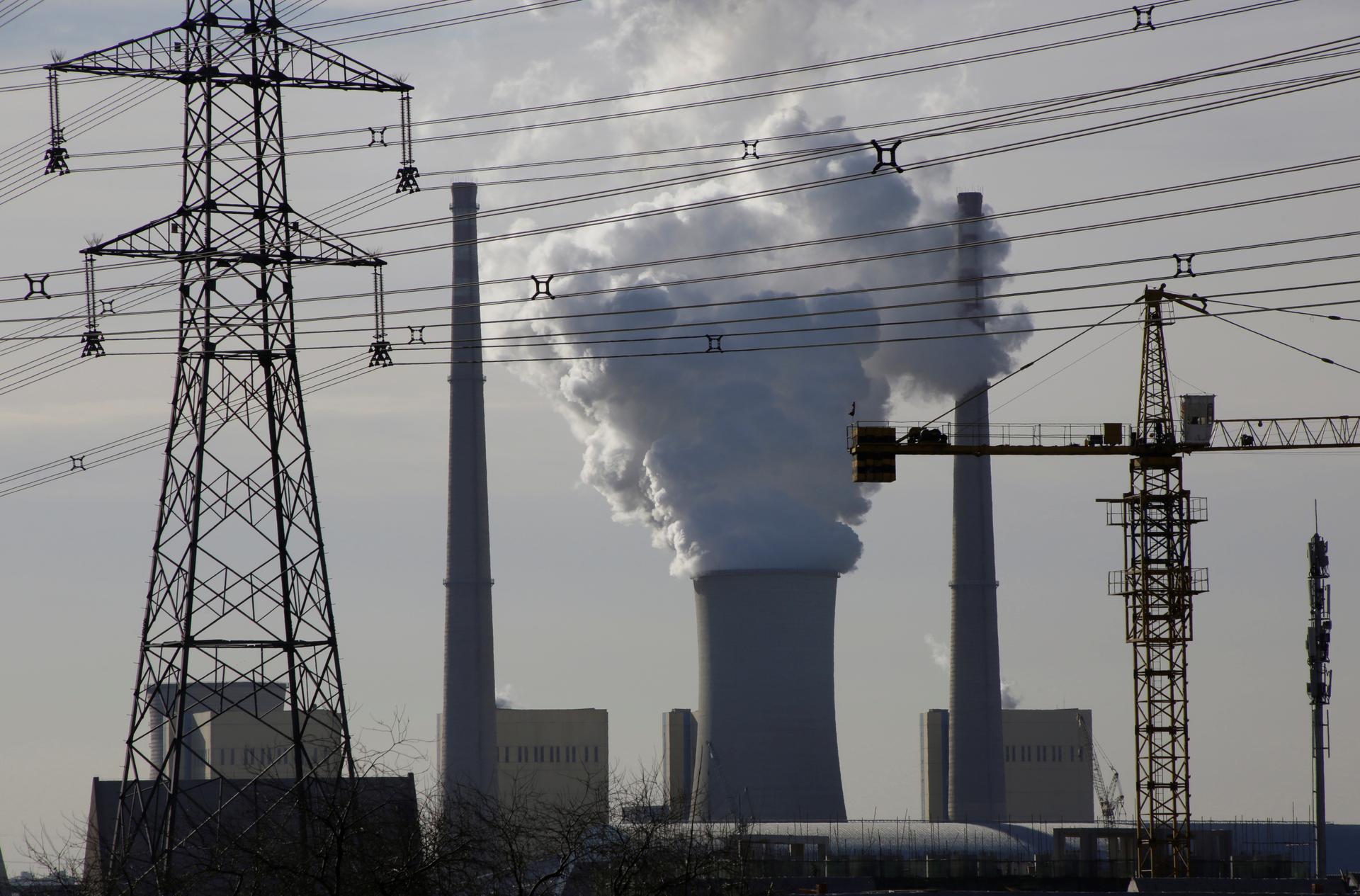Globe-trotting pollutants pose a larger threat to public health than previously thought
A coal-fired power plant is pictured near a construction site in Beijing, China. New research suggests that coal-fired plants in China and India are increasing the levels of carcinogenic pollutants in the US and other parts of the world.
New research suggests that when it comes to air pollution, what goes around comes around.
Polycyclic aromatic hydrocarbons — toxic air pollutants produced by fuel combustion — are typically treated as a local issue in places with smog and bad air quality. A recent study suggests, however, that these pollutants may actually travel long distances and affect people across the globe.
PAHs have been around since humans first mastered controlled combustion, says Staci Simonich, a professor of chemistry at Oregon State University and co-author of the recent research. “Whenever there's been fire, we've created these PAHs, so we're still learning about these compounds [and] how they affect people and the environment.”
Simonich’s research group at Oregon State University has been primarily studying how PAHs get transported across the Pacific Ocean to the US West Coast from “source regions,” like Asia. They try to measure how much PAH in the US is coming from other countries versus how much is from local sources.
The researchers found discrepancies between measurements taken in remote, high-elevation areas and the levels predicted by their computer models. The actual measurements were higher than expected. So, the new research combined experiments in the laboratory, computer modeling and field measurements “to come up with a new explanation for why these PAH concentrations are higher.”
The researchers, who collaborated with the Pacific Northwest National Laboratory and Peking University, found that when PAHs attach themselves to particles in the air, they are actually shielded and protected from reactions in the atmosphere. The result is they travel long distances and don't degrade in the atmosphere.
These particles measure less than one micrometer in diameter, Simonich explains. About five or six of these particles fit across the width of a human hair.
“Because they're such fine particles, they don't settle out near source regions — near, let's say, major urban areas,” Simonich explains. “They get pulled into the atmosphere and can undergo transport in high-elevation winds, where they're intercepted and may ultimately come out of the atmosphere due to rain and snow.”
Simonich and her colleagues find PAHs everywhere they look: major urban areas, remote islands and mountaintops 2,700 meters high. But they also find PAHs in some surprising places, like Glacier National Park in the US.
Humans are exposed to polycyclic aromatic hydrocarbons in their diets (grilling, for example), by smoking, through indoor air exposure and by breathing air that has arrived via long-range transport. “It's just part of our outdoor air, and outdoor air becomes indoor air,” Simonich explains.
Polycyclic aromatic hydrocarbons are considered carcinogenic and the new research suggests global lung cancer risk may be up to four times higher than previously believed due to the persistence of these pollutants in the atmosphere. Researchers are also finding that PAHs affects humans and other organisms in additional ways, including cardiovascular health and fetal development.
In the US, the risk is elevated on both coasts. On the West Coast, PAHs come from emissions in Asia, primarily China. The East Coast gets hit by emissions from local sources that are transported on winds that blow primarily from west to east.
“I always like to say, ‘What goes around comes around,’” Simonich says. “It drives home the idea that we're a connected atmosphere, and that what happens in one part of the world impacts other parts of the world. We're all united in one atmosphere.”
This article is based on an interview that aired on PRI’s Living on Earth with Steve Curwood.
